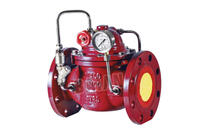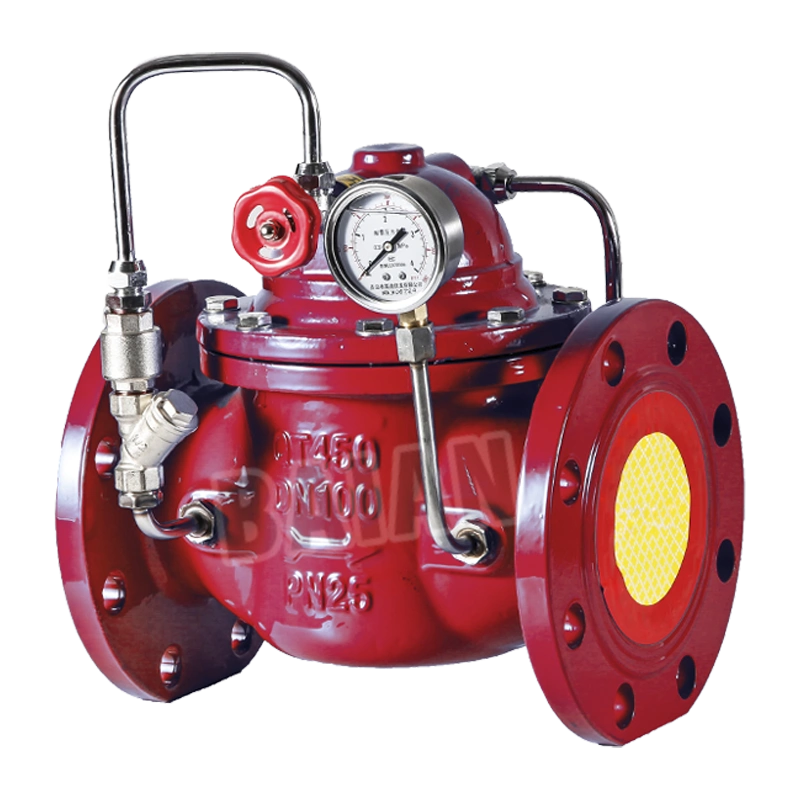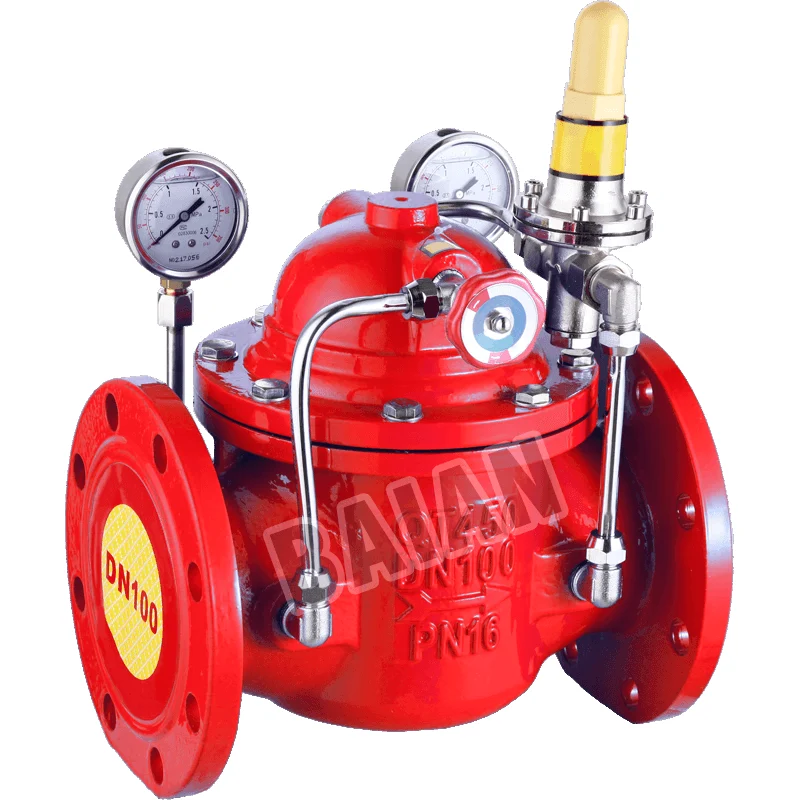
Quanzhou Howfun IMP & EXP Trading Co., Ltd. » Notes » What Is a Fire Valve and How Does It Ensure Safety in Fluid Systems?

-
What Is a Fire Valve and How Does It Ensure Safety in Fluid Systems?
What Is a Fire Valve?
A fire valve is a specialized control device installed in a fluid system to manage water or other extinguishing media flow in fire protection setups. It activates or isolates portions of piping when firefighting is required. In short, the fire valve ensures that water reaches where it is needed and stays off where it’s not. Its role is fundamental in any system designed for valve fire protection.

The Key Components of a Fire Valve
Every fire valve has several essential parts: the body, the closure mechanism (gate, butterfly, etc.), the actuator (manual or automatic), seals and gaskets, and connection points to piping. The body must handle high pressure, temperature, and occasionally rapid cycling. The actuator allows quick operation. The seals must prevent leakage under fire conditions. Together these parts make sure the valve opens or shuts reliably when called.
Types of Fire Valves in Fluid Systems
Fire-suppression fluid systems use different types of valves:
-
Gate valves that lift a gate to allow flow or stop it.
-
Butterfly valves where a disc rotates to open or block flow.
-
Hydrant valves that connect hoses for field firefighting.
-
Deluge or pre-action valves in sprinklers that respond to alarms.
Selecting the correct type ensures the valve matches system demands and supports overall valve fire protection.
How a Fire Valve Works During an Emergency
When a fire alarm triggers or a sprinkler head opens, pressure changes in the pipe system communicate that water is needed. The fire valve opens (or remains open) to allow flow. In other cases the valve isolates damaged zones to prevent unwanted flooding or loss of pressure. Thus, the fire valve plays both reactive and proactive roles: supplying water and protecting unaffected sections.
Role of the Fire Valve in Isolation and Control
In many buildings and facilities the fluid system is divided into zones. A fire valve allows each zone to be isolated for inspection, maintenance, or repair without shutting down the entire system. That segmentation improves reliability and enables continuous operation of the fire-suppression system. The valve becomes an essential part of the fire safety strategy, enabling effective zone control.
Material and Construction Requirements
Because fire valves serve in extreme conditions, their materials and construction quality matter. They must resist corrosion, withstand high pressure, tolerate elevated temperatures, and operate reliably after long standby periods. The body might be cast iron, ductile iron, bronze, or stainless steel depending on the use case. The selection of material affects longevity, performance and the overall effectiveness of valve fire protection.
Installation Considerations for Fire Valves
Correct orientation, accessibility, spacing, support, and compatibility with the piping and sprinkler or hydrant system all matter. The valve must be accessible for inspection and testing. It needs correct flow direction marking and a clear path for operation. Poor installation can compromise performance and even render the valve ineffective in a fire. Every installation step plays into the fluid system’s safety.
Maintenance and Testing of Fire Valves
Regular testing and inspection are vital for reliable performance. Visual inspection, operational testing (open/close), leak checks, and verifying that the actuator responds correctly help maintain system readiness. If any parts show wear or corrosion they should be replaced. Good maintenance practices underpin effective valve fire protection and lend confidence that the system will function when needed.
Integration with Fire Sprinkler and Hydrant Systems
A fire valve does not operate alone. It integrates with sprinklers, hydrants, standpipes, alarms and piping networks. In sprinkler systems the valve controls water to specific zones; in hydrant systems it allows firefighting crews to connect hoses. Effective integration means that when the system triggers an alarm the valve component supports the flow, isolation, and control functions for the entire system.
How to Adjust PRV Valve and Why It Matters
Although a fire valve is distinct from a pressure reducing valve (PRV), proper system pressure regulation is equally important. Knowing how to adjust PRV valve is essential because if the pressure is too high or too low the fire valve may fail to perform as designed. For example, excessive pressure can damage the valve or cause premature wear; too low pressure may prevent adequate flow. By adjusting the PRV correctly, one ensures the fire valve conditions are ideal for activation and response. Thus, pressure regulation complements valve fire protection.

Common Issues and Troubleshooting
Several problems may reduce a fire valve’s effectiveness: corrosion, stuck actuator, leakage past the closure mechanism, improper sizing, wrong material, or inadequate maintenance. If a valve won’t open when needed or leaks when it should remain shut, the consequences can be severe. A systematic troubleshooting process—inspect, test, adjust or replace—helps restore proper functioning of the fluid system and supports fire safety.
Selecting the Right Fire Valve for Your System
When choosing a fire valve, consider flow capacity, maximum pressure, connection type, material suitability, compatibility with extinguishing media, compliance with standards, and ease of maintenance. The decision affects not just installation cost but long-term performance and system reliability. Proper selection is a cornerstone of effective valve fire protection in your facility.
Standards and Certification Requirements
Fire safety systems must meet local and international standards. Fire valves may need certification by recognized bodies, compliance with building codes, and alignment with fire suppression design criteria. Using a valve that lacks proper certification can compromise insurance coverage or regulatory compliance. Good manufacturers deliver valves tested for the specific conditions encountered in fire protection systems.
Real-World Applications in Commercial and Industrial Settings
In high-rise buildings, the fire valve controls water to different floors, ensuring quick isolation or supply. In industrial plants, it may protect zones with chemical hazards or high-risk equipment. On marine vessels, fire valves guard engine rooms or fuel-storage sections. Across all sectors, the valve supports the safety of both property and people by being a reliable pivot for flow control and system readiness.
Benefits of High-Quality Fire Valve Systems
Choosing a well-engineered valve yields benefits: consistent performance under stress, lower maintenance requirements, long service life, better safety margins, and peace of mind. When one speaks of valve fire protection, these advantages become clear: the valve becomes a dependable component in the fire-suppression strategy, reducing risk and enhancing system resilience.
How the Valve Enhances Safety in Fluid Systems
In summary, the fire valve ensures safety by:
-
Regulating flow to fire-response devices,
-
Isolating sections to limit damage and facilitate repair,
-
Operating reliably under fire conditions,
-
Integrating with other system components for coordinated response.
Each of these functions helps fluid systems remain effective during emergencies and supports the broader fire-safety framework.
Future Trends and Innovations
The fire protection industry continues to evolve. Smart actuators, remote monitoring, improved materials, and predictive maintenance are gaining ground. These innovations enhance valve responsiveness, performance tracking, and system diagnostics. In time, valve fire protection systems may include sensors that trigger pre-emptive checks, or actuators that self-test routinely. Keeping abreast of these trends is wise for facility owners and safety managers.
Conclusion
A fire valve plays a pivotal role in fluid-based fire-suppression systems. By controlling, directing and isolating flow, it ensures that when fire strikes the system responds swiftly and effectively. Integrating pressure regulation (such as knowing how to adjust PRV valve) and regular maintenance enhances performance. For any facility, the selection, installation and upkeep of fire valves are non-negotiable if you aim for a reliable fire-safe system. Invest in the right design, materials and service. Let your fire valve system protect what matters most when seconds count.
-
-




